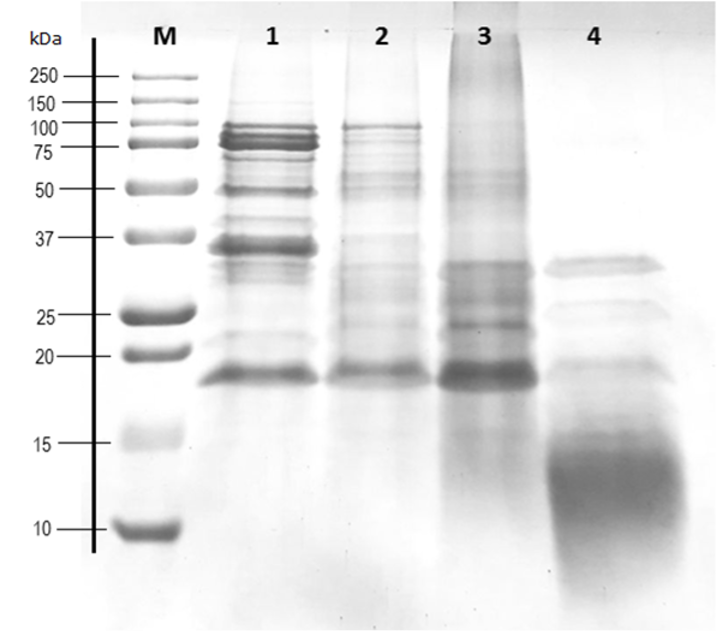 |
|
The objective of this work was to develop a formulation and encapsulation method for the delivery of protein hydrolysate to the colon. Alginate (A) and xanthan gum (XG) were selected as wall materials. Three formulations were used to encapsulate the protein hydrolysate from germinated soybean (PHGS) by ionic gelation followed by freeze-drying. During in vitro digestion, the microstructure was monitored by ESEM, and the site-specific release of beads was confirmed by fermentation under colonic conditions with human inoculum. All beads were probed to resist in vitro digestion, preserving their structure at the end of digestion. The release of protein during digestion was lower for the beads containing A+XG than for those with only A. The beads with A released 19.38±1.58% of the protein, and the beads containing A+XG released 17.32±0.29% for 0.3% XG and 7.19 ±0.00% for 0.5% XG. During fermentation, the beads containing A+XG produced a high concentration of short-chain fatty acids and lower unfermented residue in comparison with those made only with alginate. All formulations protected PHGS from conditions of the upper gastrointestinal tract and proved to be fermentable by the intestinal microbiota; thus, they can be used as controlled release systems for protein hydrolysate in the colon.
Keywords: Encapsulation, protein hydrolysate, controlled release, in vitro gastrointestinal digestion, in vitro colonic fermentation.
|
|
 |

